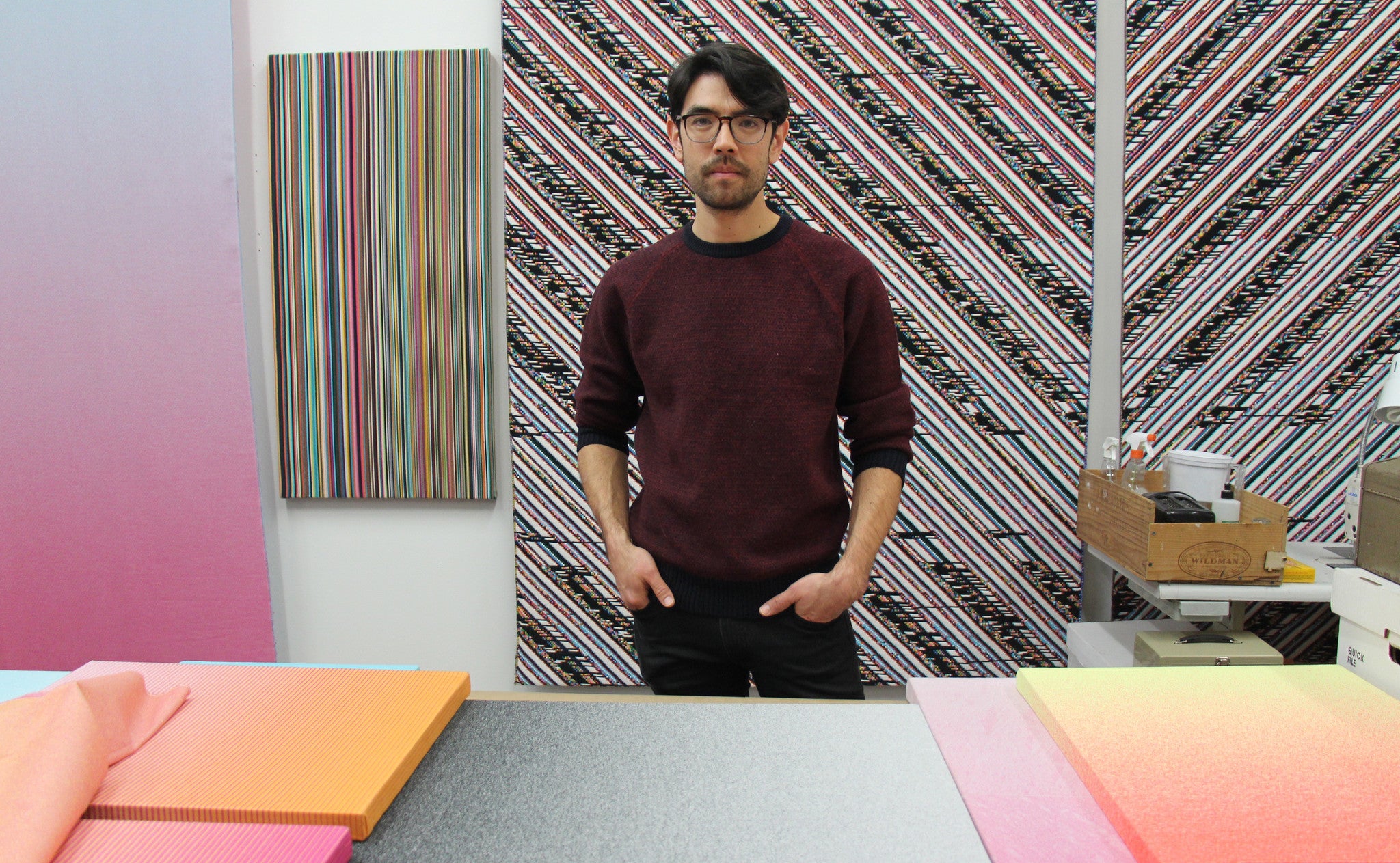Glitch Textiles

Brooklyn based artist and designer, Phillip David Stearns is founder and creator the stunning weaves behind Glitch Textiles. These woven throws are not only cozy (we own one!), but they create subtle structures of our digital reality into intimate, tactile materials. Phillip’s designs are expressions of the abstract and invisible language of digital technologies. He believes that the immaterial world of the digital has a vital materiality, and that materiality has the power to touch and move us. We’re simply moved by their beauty.
Erin: What are you curious about?
Phil: Everything, but viewed mostly through the lens of technology as a cultural artifact embed with the ideology and beliefs, desires and anxieties of a society. I've worked a lot with electronics both analog and digital, software and code, and now am looking towards molecular biology.
Erin: Describe your art and describe your process.
Phil: My art spans several disciplines and takes form through sound, performance, light, video, installations, textiles, still images and digital sculpture. I tend to view the works as artifacts of a particular methodology, each unique to a combination of ideas, materials, and processes. These core elements come into dialog through systems that I establish through experimentation.
Erin: With a multidisciplinary practice, how does your music inform your art and vice versa?
Phil: The notion of improvisation as composition is something that I think was really shaped by my studies in music at Cal Arts. Developing a sensibility towards working with the volatility of material, learning how to work through the unknown or unplanned and to embrace the results, is something I've taken from my studies in music and applied to other aspects of my life.
Erin: We first found you in a Kickstarter campaign using batteries to make electrically charged art. Tell us about that body of work.
Phil: The project involved making image by discharging 15,000 volts from neon transformers into instant color film. Batteries were used as a way to help give folks an idea of how much voltage I was using. I was already familiar with Hiroshi Sugimoto's work with electric discharges into photopaper and decided to try it for myself with materials I had come upon by chance. The project became an exploration of the expressive qualities of film when pushed beyond their intended purpose, also as a meditation on the dynamic between the subject and medium, how each, through process, shapes the final outcome of a work.
Erin: We are big fans of your Glitch Textiles woven throws. We even have a few ourselves! What's the concept behind these?
Phil: In 2006 I began sewing interactive electronic audio circuits onto stretched burlap. Integrating these simple computational sound compositions into primitive textiles highlighted an interplay between weaving, mathematics, cultural development and computer science going back thousands of years. Glitch Textiles was a return to this idea of tapping into the shared histories of textiles and computer science, but from the perspective that the textile is a physical output of a binary set of data—the punched cards used to produce patterned fabric on Jacquard looms were also employed as early computer storage media.
Erin: Where do you pull your inspiration from?
Phil: Being alive and being with other vibrant beings. Experiencing as many things as possible, even if it's something as seemingly innocuous as food. I've had the great fortune of being able to travel a fair amount and find inspiration in observing and taking part in the way others live. Getting a sense of the dynamics of a different culture can open your eyes to things about your own that maybe you weren't quite aware of.
Erin: What is the most important thing you learned and from whom?
Phil: My parents taught me how to teach myself.
Erin: If you had one superpower what would it be?
Phil: Giving everyone superpowers!
Erin: If you could collaborate with anyone dead or alive who would it be with and what would it look like?
Phil: I would love to collaborate with ALCOA. I have been working on ideas for pieces that use gravitational fields as a medium. Most sketches involve burying or removing mass from landscapes based on curves generated by equations and repurposed algorithms commonly used in metals commodity trading.
Erin: What's next?
Phil: A living gallery for digital art. A museum for anthropology of the present. Artificial solar flares. Art that is activated by radioactive decay. And much much more.


